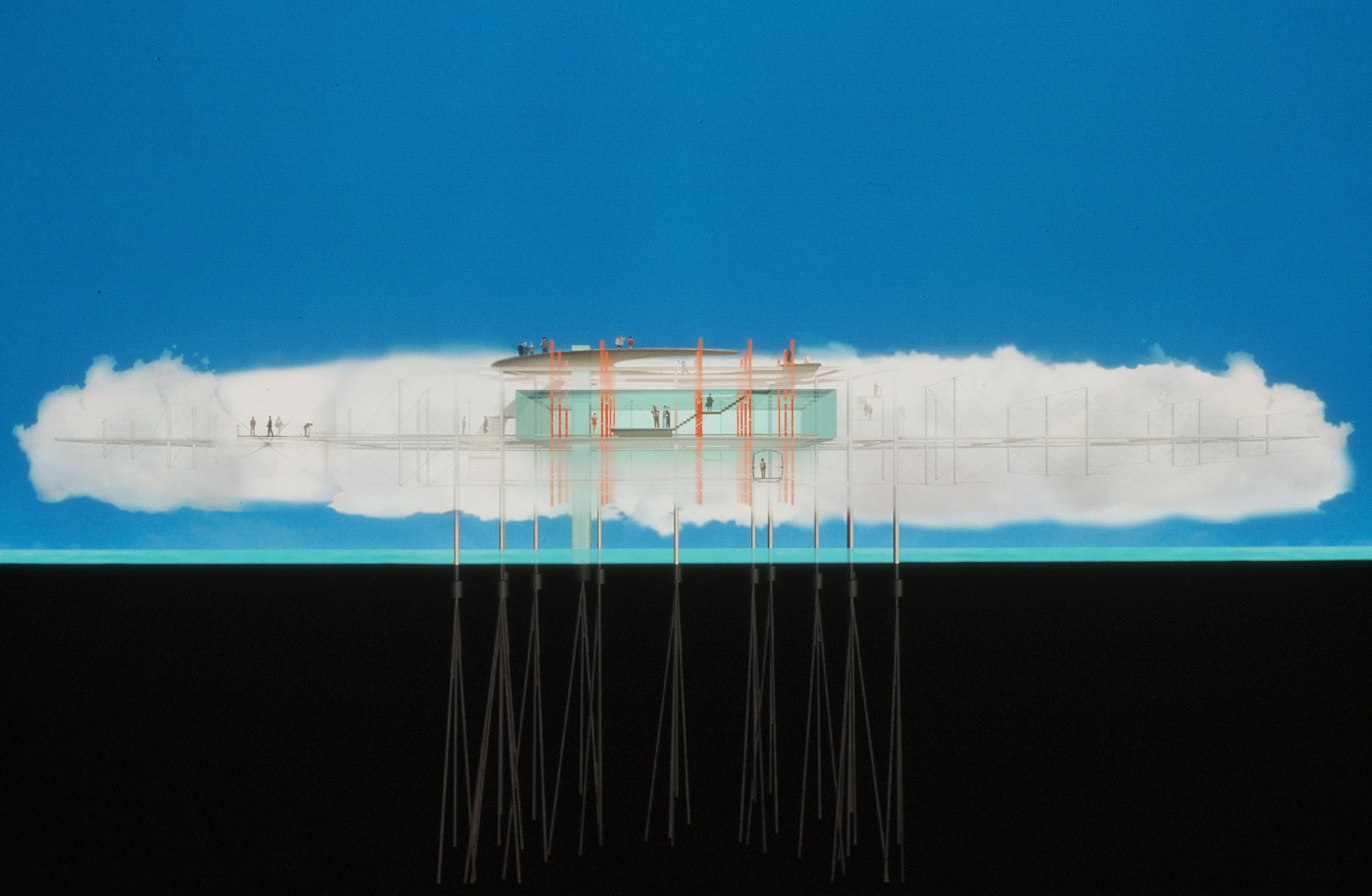Tuesday, November 28th, 2023, 5:30pm
ZKM Zentrum für Kunst und Medien Karlsruhe – Media Space Display
Giulia Bini
Offline: 2 route des Franchises, 1203 Genève, 5th Floor, room 5.14
 Credits: Elizabeth Diller and Ricardo Scofidio, Blur Building, Section Render, 2002. Courtesy: Elizabeth Diller e Ricardo Scofidio + Renfro
Credits: Elizabeth Diller and Ricardo Scofidio, Blur Building, Section Render, 2002. Courtesy: Elizabeth Diller e Ricardo Scofidio + Renfro
The talk will focus on the recent book “ZKM|HFG Media Spazio Display,” a study at the crossroads of media theory and philosophy, curatorial studies, architectural theory, and cybernetics.
The aim is to retrace a few specific moments in the history of the ZKM Karlsruhe, by an analysis which reflects on the genesis of the space, starting from its architecture, from the ideas and theoretical tradition of which the ZKM has been an incubator, in order to finally develop the analysis of specific exhibitions.
From the outset, the institution wanted to promote a distinctive line of thought and theoretical tradition, while at the same time maintaining a transitory and multifaceted character that enabled the experimentation of multi-layered exhibition formats.
Articulated in three sections: Media – Space – Display, the talk intends to reflect on the impact of techno-scientific discourse, and transdisciplinary artistic practices in rethinking institutional models and exhibition methods.
Under the category Media we will explore the Museum’s foundation and conception through the analysis of the unrealized project by Rem Koolhaas (OMA) and the theoretical model of the “Fun Palace” by Cedric Price, introducing Cybernetics, Science which runs through the whole study. In the section Space we will formulate a number of critical hypotheses on the Centre’s double nature as a museum and “factory of ideas”.
After introducing the idea of approaching a building as a system/machine, we will move toward a more fluid configuration of space, thanks to Peter Sloterdijk’s “Spherology” and Bruno Latour’s theses on design. Both intellectuals contributed a speculative dimension to the notion of architectural space, suggesting hypotheses for the analysis of the transformations underway in contemporary art practices and, as a consequence, in museums.
In conclusion, the section Display focuses on the analysis of a few exhibitions/case studies, through which the notion of “display” will be tested as a tool for investigating exhibitions, allowing us to focus on the semantic and affective implications of a given space.